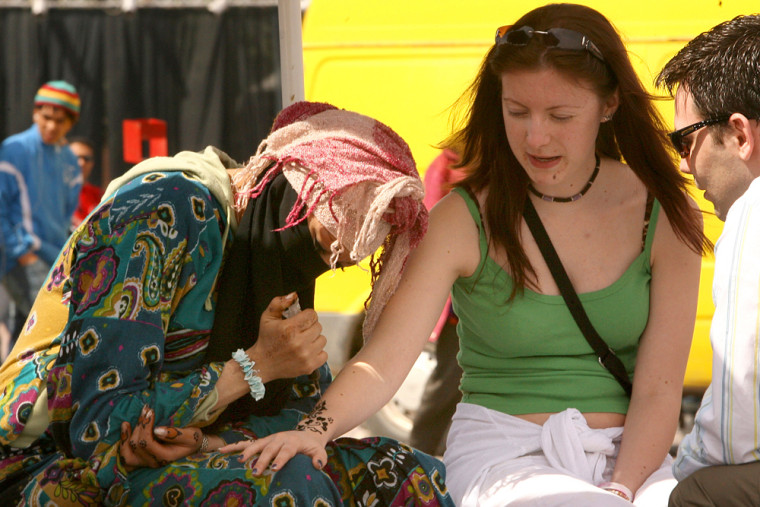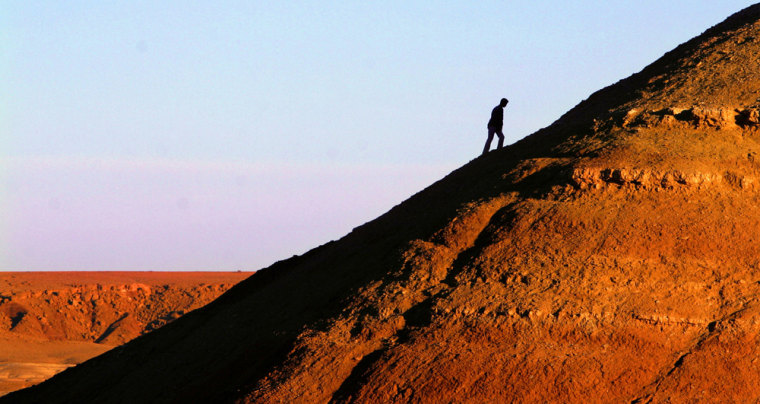Morocco is probably best-known to American travelers for cities like Fez, Casablanca and Marrakech. But this country in the northwest corner of Africa is actually a place of dramatic variety. On a two-week or even one-week visit, it's feasible to fit in a trip to a major city or two, in addition to exploring rural areas.
You might explore undulating desert dunes, the magnificent Atlas Mountains, or a tranquil beach like those found near Agadir. Or visit the Volubilis Roman ruins near Meknes, the dinosaur footprints near Azilal, or eerily quiet Berber villages around Imlil, at the base of Mount Toubkal.
The ancient city of Fez is known for its architecture, alluring medina (the old part of the city) and Karaouine Mosque and University, dating from 859. In Marrakech, by day you can explore the Saadian tombs and the luscious Marjorelle Garden, and by night the famous Djemaa El Fna square, with its food stalls, entertainers and peddlers.
In Casablanca, the modern, giant Hassan II mosque looks like it's melting into the sea at sunset. And for fans of the famous 1942 Humphrey Bogart movie, head to Rick's Cafe, opened by American Kathy Kriger in 2004, a marvelous evocation of the film.
But Americans living in Morocco advise that there's no such thing as a "must-see" list. "There are many places beyond Marrakech that people should consider putting on their agenda," said Vanessa Noel Brown, from Washington D.C., who has been studying in Rabat, the capital city, on a postgraduate scholarship since September 2007.
The U.S. Department of State warns that the "potential for terrorist violence" in Morocco is high. But the number of American visitors to Morocco is slowly increasing, according to statistics from the tourist board and the U.S. Embassy here. In 2007, 131,000 Americans visited, 13 percent more than in 2006, when 115,000 Americans arrived.

"Americans like Morocco — they get a taste of the Arabic world, without having to go to the Middle East," said Yassine Naciri, who works at a mid-range hotel in the old part of Marrakech, the tourism hub of the country.
His hotel, Marhbabikoum, like many, is the of the traditional "riad" style: quaintly decorated rooms built around a tiled courtyard, gently lit by candlelight in the evening.
The very best riads are complete with an in-house "hammam," an opulent version of traditional Moroccan communal bathhouses.
It is also possible to stay in a restored kasbah. There are hundreds of them around the country; they once served as fortresses for the most important families. Some stand empty now, while others have been turned into luxury hotels. But budget travelers can also find cheap hostels and guesthouses all over the country, for as little as $10 a night.
Foreigners can expect to attract attention, especially in the more touristy areas, where touts — people who offer unsolicited services for tips — are desperate for business.
Those worried about language difficulties should be reassured that English is more and more widely spoken, according to Hamid Khairi, founder of the Morocco section of CouchSurfers, the popular U.S.-based accommodation swap Web site, which is an option for those traveling on a shoestring. "But basic French is useful," he said.
The main language, the Moroccan Arabic dialect known as "derija," is quite different from modern standard Arabic, even posing problems for native Arabic speakers.
To confuse things further, many Moroccans also speak one of the Berber languages, Tachelhit, Central Atlas Tamazight or Tarifit.
Morocco's culinary splendor needs little translation however; the superb fusion of French and Middle-Eastern fare speaks for itself.
The day starts with a spectacular array of patisserie (as little as 25 cents) at the street stalls), accompanied by "qehwa bil halib" (coffee with milk) and the startlingly good "aseir limun" (orange juice).
Lunch is couscous, or tagine — which is the name of both a rich stew and the dome-shaped terra-cotta pot in which it is cooked.
To fill the gap between meals, "le gouter" of coffee or tea and cake might be taken at 7 p.m.
Moroccan dinner, normally eaten around 10 p.m., might be "harira" (soup with tomato and lentils), or perhaps an omelette and bread.
The renowned sugary mint tea is drunk throughout the day, and at greater frequency the farther south you go.
With the exception of hot drinks where the water has been boiled, drinking bottled water is advisable.
Islam is central to Moroccan life and on the main religious day of Friday, shops and businesses frequently shut for a good proportion of the afternoon, also allowing time for families to eat couscous together.
While it is not necessary to cover hair, or put on the "djellaba" — the long traditional gown — women may want to dress modestly in respect to local customs.
Adriana Valencia, a postgraduate scholar from the University of Berkeley, who lived in Rabat in 2006 and often comes back, urges visitors to explore a little. "Just ride a bicycle from Rabat to Essaouira, and stop in basically every small town and city in between," she said.
If a bike sounds a bit strenuous for a vacation, hiring a car and driver is always an option.
For travelers saving their dirhams (the local currency, currently about seven to the dollar), sharing a "grand-taxi" which seats two in the front, and four in the back, is the most convenient way to get between towns and villages.
The smaller "petit-taxis," a different color in each town, are limited to three people but Moroccan law does not allow them to leave their designated city.
Buses are to be found in the town "gare routiere," and the mainly efficient trains run between major cities. Those on a bigger budget can take a four-wheel drive vehicle, known locally as a "quatre-quatre," on a tailor-made tour.
Choosing the best season to visit really depends on where travel is planned. The High Atlas Mountains are best walked in spring and autumn. Farther south, nearer the desert, summers can get unbearably hot.
It's a bit chilly year-round on the Atlantic Ocean, but beaches are at their warmest in July and August.
In addition to Fez, Casablanca, Rabat and Marrakech, it is worth considering visits to Essaouira, for a glimpse of a coastal town with a rich architectural history, and Agadir, where you can start a trip along the coast, eat sumptuous seafood, and perhaps head out to the Anti-Atlas Mountains.
A few other places worth seeing in the countryside include:
- Chefchaouen, a pretty, quaint town, where the houses are painted blue, and which you can use as a departure point for exploring the rural north.
- Zagora, a small town next to the desert that can serve as a starting point to visit the villages of Tamegroute and Amezrou, and Mounts Zagora and Azlag.
- Merzouga, a small village reached via the town of Rissani, which provides accommodation within walking distance of Erg Chebbi, Morocco's largest sand dune.
- Ouarzazate, where you'll want to visit the kasbah, then head to the impressive Todra and Dades gorges.
And if you get homesick, you can even find a slice of stateside life in Morocco. Just hunt out the restaurant offering "Pizza a l'Americaine" near the Hassan Tower in Rabat.
"I was walking past one day and just caught this whiff of New York pizza, it was unmistakable," said Valencia.
The pizzeria's owner, Moroccan Max Labdi, was a New York cab driver for four years before coming home to set up the business.
"The American pizza is the best in the world. It just needed to come to Morocco," he said.
